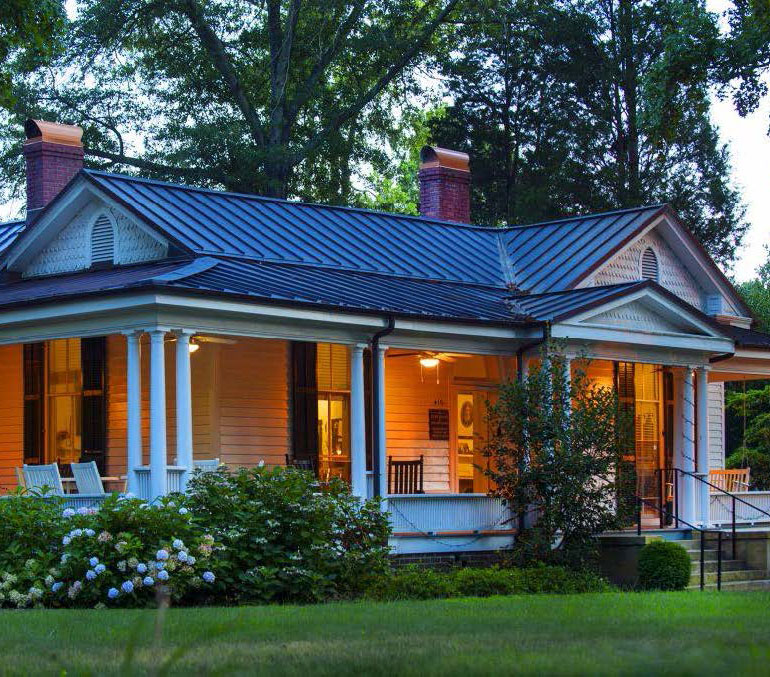
History of the Love House
For over two thousand years, the land where the Love House and Hutchins Forum stands has held stories of the South.
Long before Chapel Hill existed, Indigenous people camped here seasonally, leaving behind pottery and tools that university archaeologists uncovered in 2004. As Jon Marcoux, Director of UNC’s Research Laboratories of Archaeology stated, “while the historic landscape of the Southeast [during that time] was incredibly dynamic…it is certainly appropriate to refer to the people who lived on the land where Love House is now located as the ancestors of today’s tribal communities across North Carolina,” including the Catawba. Pottery fragments and projectile points date the encampment from 800 BCE to 800 CE, making it one of the earliest known Indigenous sites in this region.

After the University of North Carolina was founded in the 1790s, this land became part of the village of Chapel Hill.
In 1812, a home was built on the property for the university president. The house burned in the 1880s, and James Lee Love, a UNC alumni and mathematics professor, rented part of the property and built a house for himself and his wife Julia “June” Spencer Love, as well as her mother, Cornelia Phillips Spencer, a local artist and writer. Described as a “confounding and paradoxical figure” in UNC history, Spencer was a vocal conservative who supported both the state’s white supremacist Democratic Party and the post-war reopening of UNC as key to rebuilding the local economy.
The last family member to live in the Love House was Spencie Love, the granddaughter of James and June Love, and a daughter of Spencer Love. A journalist, historian and writer who worked with the Southern Oral History Program, Spencie Love played a key role in preserving the property before UNC formally repurposed it.
CSAS
In 2007, the Love House became the home of the Center for the Study of the American South.
Henry Louis Gates, Jr., a distinguished scholar of African American history, gave the dedication. Of the event, Paul Jones, the founder of UNC’s ibiblio.org, wrote, “The house is of special historic interest in many ways. This move to a historic house and a notable home says a great deal about how the South is constructed in our minds and in our experiences. Having Dr. Gates [as] the speaker indicates a nuance of that construction—a recognition of rooms left unvisited.”¹


The Love House Today
Today, the Love House stands as a layered symbol—built on Indigenous land, shaped by generations of white North Carolinians whose status was secured through Black labor, and now a place of inquiry into the South’s complexities.
In 2023, the Center marked its 30th anniversary by appointing historian Blair L.M. Kelley as its first Black woman director, a reflection of the region’s ongoing transformation. At UNC, southern identity is both incidental and inescapable, intimate and contested. To study the South is to reckon with its contradictions—its legacies of power and exclusion, but also its capacity for reinvention. There is always more to uncover, more to reconcile, and more to question.²
- Paul Jones, “Dedication of Love House” in “The Real Paul Jones,” April 21, 2007 http://www.ibiblio.org/pjones/blog/dedication-of-love-house/ from Saunders Duncan: https://unchistory.web.unc.edu/building-narratives/the-love-house-and-hutchins-forum
- This paragraph drawn in part from Ellen Saunders Duncan’s Love House history (2015): https://unchistory.web.unc.edu/building-narratives/the-love-house-and-hutchins-forum/

